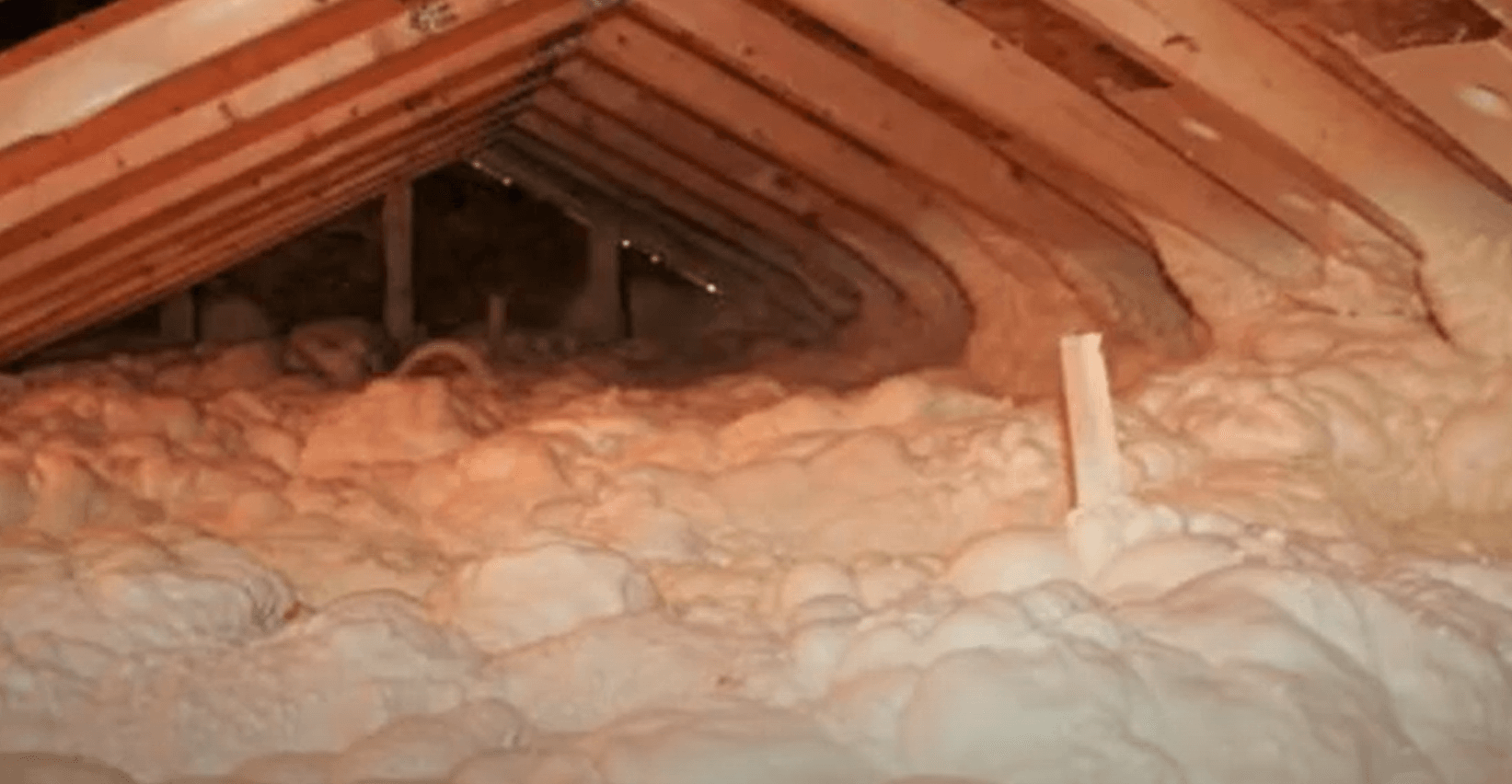Understanding Thermal Barriers And Ignition Barriers For Spray Polyurethane Foam

Updated October 29, 2024
Fire protection is incredibly important when using spray polyurethane foam (SPF) insulation. Let’s explore two primary protective measures—thermal barriers and ignition barriers—which help prevent the spread of fire by either slowing down heat transfer or delaying ignition.
Spray Foam Thermal Barriers
Thermal barriers separate SPF from interior living spaces. They help to prevent fires and delay the temperature rise of the foam during a fire situation.
Building codes require that SPF is separated from living spaces by an approved thermal barrier in most cases. A ½-inch gypsum board is considered a widely accepted option, per International Building Code (IBC) and the International Residential Code (IRC) recommendations.
Spray Foam Ignition Barriers
Ignition barriers are less stringent than thermal barriers. They are used areas not typically occupied by people (such as attics and crawl spaces) to delay the foam’s ignition in the event of a fire.
Because they’re used in unoccupied or hard-to-access areas, the barrier doesn’t have to meet the same fire-resistance ratings as thermal barriers. Common materials include certain types of coatings or thin layers of drywall.
What Spray Foam Contractors Should Know
- Barriers must pass American Society for Testing and Materials (ASTM) E84 (flame spread) and ASTM E119 tests. Always verify materials you’re using are compliant with insulation codes.
- Local building codes and standards can impact what barrier materials are acceptable and the right fit for various projects.
- Proper foam application and barrier installation are essential for safety. Ensure that barriers are installed correctly and maintained to prevent heat and flame exposure.
- Document all insulating materials and methods used, including details of the thermal or ignition barriers. This documentation is vital for compliance with building codes and future inspections.
- Be prepared for inspections that will verify compliance with thermal and ignition barrier requirements. Understanding local codes can help avoid compliance issues during these inspections.
Read the full article for more information about fire safety:
Thermal Barriers and Ignition Barriers for the Spray Polyurethane Foam Industry
